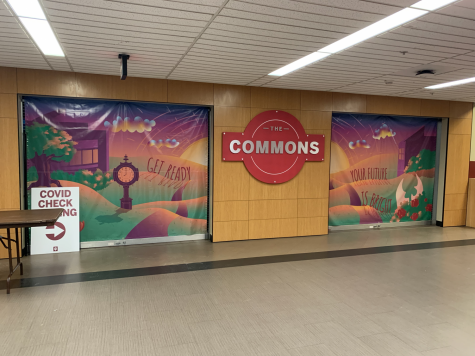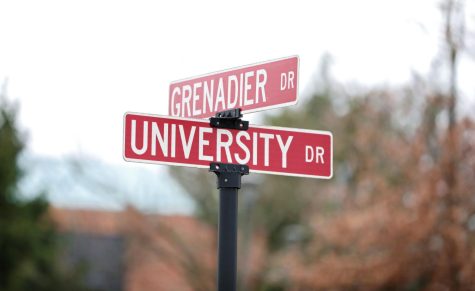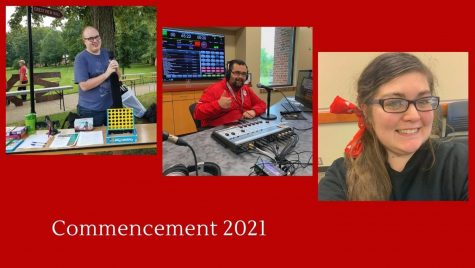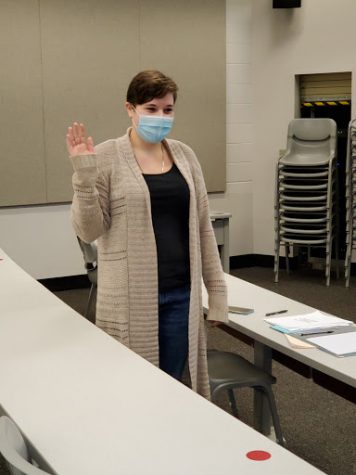New bridges to bring changes for Kentuckiana drivers
The Lincoln and Kennedy bridges will be two bridges connecting Southern Indiana and Louisville that will be tolled beginning in late 2016, according to the 2014 IU Southeast Bridge Toll Survey. Drivers will have various options on how they wish to pay the bridge tolls.
The last thing IUS students or professors need when traveling to campus is to be waiting in long lines of traffic as the exhaust from hundreds of cars fills the air.
This is the reality of some tolled bridges. But the new bridge toll system coming to Louisville will be designed to change that.
The toll system has been named RiverLink. According to the RiverLink website, the system will be completely electronic and free of toll booths, so no stopping will be required.
The Louisville-Southern Indiana Ohio River Bridges Project will soon be completed, according to the RiverLink website. The project includes the new downtown Abraham Lincoln Bridge, an improved Kennedy Bridge, a new East End Bridge and a rebuilt Spaghetti Junction, the website said. The project took a joint effort between Indiana and Kentucky and included the support of the Federal Highway Administration, but the parties still fell short of the projected $2.3 billion cost.
To help keep the project going, leaders from both states and the Federal Highway Administration decided that revenue collected from tolls will be used to help pay for the project, according to the RiverLink website.
Information about the tolls
Although final decisions have not yet been made, some tolling figures have been set, according to the 2014 IU Southeast Bridge Toll Survey conducted by the Office of Institutional Effectiveness. The survey said there will be no tolls on the Sherman Minton and Clark Memorial bridges, but tolls will be levied on the new East End Bridge Crossing and I-65 beginning in fall 2016.
Initial rates for the Abraham Lincoln, Kennedy, and East End Bridges will be $1 for frequent commuter cars, $2 for other cars, $5 for box and panel trucks and $10 for tractor-trailers.
According to the 2014 IU Southeast Bridge Toll Survey, if drivers register their plates and set up prepaid accounts with RiverLink, the toll rates will be $3 for cars, $6 for medium trucks and $11 for heavy trucks. For drivers who do not register their plates and choose to be invoiced instead, rates will be $4 for cars, $7 for medium trucks and $12 for heavy trucks, the survey said.
Frequent commuters — those who cross a tolled bridge between 20 and 40 times both ways each month — will likely pay a reduced fee for each trip across, according to the 2014 IU Southeast Bridge Toll Survey.
According to the RiverLink website, frequent commuters will also be provided with a free transponder to place under their rearview mirror. The website said the transponder can’t be removed without being destroyed once it is on the windshield, and drivers with more than one vehicle can receive up to four transponders that can be linked to one account.
As mentioned on its website, the RiverLink system is designed to keep drivers moving at highway speeds while recording them crossing the bridges in one of two ways. The site said each bridge in the bridge toll system will be equipped with sensors and video cameras.
Depending on the chosen method of payment, sensors will recognize the transponder a driver has placed on his or her windshield, or a camera will capture a picture of the driver’s license plate, according to the RiverLink website. The website said the toll will be automatically deducted if the driver has set up a prepaid account, or the driver will receive a bill for the toll charge in the mail.
Drivers can purchase a RiverLink E-ZPass transponder if they travel around the country, according to the RiverLink website. The site said 16 states have E-ZPass systems, and the E-ZPass transponder will provide access to all of the systems in those states, so stopping at toll booths will not be necessary.
This transponder also goes on the windshield, but can be moved from vehicle to vehicle, according to the RiverLink website. The site said the transponder will cost $15.
Opinions about the tolls
While the tolls may help make up for the needed funds to complete the Louisville-Southern Indiana Ohio River Bridges project, IUS students, faculty and staff who took the 2014 IU Southeast Bridge Toll Survey expressed concerns in the survey about how the tolls will affect their employment and enrollment at IU Southeast.
According to the survey, almost 60 percent of respondents used bridges to get to and from IU Southeast. The survey said the Kennedy Bridge was used by 38.9 percent of respondents, and between 43.1 percent and 51.3 percent of respondents used other bridges, such as the Sherman Minton Bridge and the Clark Memorial Bridge.
However, seven out of 10 faculty and staff respondents said that they didn’t think the tolls will have any impact on their employment at IU Southeast, and a little more than half of student respondents said they don’t believe the bridge tolls will have an impact on their enrollment or attendance at IU Southeast, according to the survey.
One-fourth of the respondents said they believed the new tolls will result in an increase of drive time, and less than one-fifth of the respondents said they thought the tolls will create added costs, according to the survey.
Joe Glover, director of athletics and interim director of marketing and communications, said that although the new bridge tolls will not affect him personally, they will affect his family.
“The tolls will affect my wife who works for a software engineering firm in far eastern Jefferson County,” Glover said. “Currently, it takes her about 50 minutes to get to work in the morning. Once the new East End Bridge opens, it will only take her about 15 minutes for her to get to work from our house. This change is well worth the tolls in my opinion. Quality of life and having her home with our daughter earlier in the evening as opposed to being stuck in downtown traffic are more important to me than paying a toll fee.”
Katelynn Kiemeyer, nursing freshman, said she’s not a fan of the tolls, but she also said she is glad they aren’t too expensive either.
“I’ll probably end up getting one of the transponders,” Kiemeyer said. “Even though I live in Jeffersonville, I like to go to Kentucky to visit friends and go shopping. It would make more sense to me to get one of those and only have to pay $2 each way instead of $4 each way if I just get sent a bill.”
Glover said he believes the bridge tolls will have a positive impact on IU Southeast’s marketing strategy toward out-of-state students.
“Citizens should remember that we are not just getting tolls, but new infrastructure that will open up our region allowing for quicker and more efficient travel,” Glover said. “From a marketing perspective, I am excited that the new East End Bridge will open up IU Southeast as an even more viable option to the individuals in Eastern Jefferson County, Kentucky and beyond. It’s estimated that the new bridge will cut 15 minutes off the trip to Cincinnati from our campus. That creates many new marketing strategies for our campus.”
Avoiding the tolls
The Clark Memorial Bridge connecting Jeffersonville with downtown Louisville and the Sherman Minton Bridge connecting West Louisville and New Albany will remain toll free, according to a story from WDRB.
According to the RiverLink website, the Transit Authority of River City received $20 million to fund numerous improvements, including enhancing bus service in Southern Indiana.
The website said TARC buses will not have to pay tolls, and riders will not be charged an extra fee for crossing the bridge.
Another option is Ticket To Ride, an alternative transportation program offered through the Kentuckiana Regional Planning and Development Agency (KIPDA).
A few of the services provided include car pools and bike pools, according to the RiverLink website.
According to the RiverLink website, all KIPDA services are available to commuters who either work or live in its nine-county region. These counties include Jefferson, Bullitt, Oldham, Spencer, Shelby, Trimble, and Henry counties in Kentucky, and Clark and Floyd counties in Indiana, according to the Ticket To Ride website.
Chris Warner, journalism freshman, said he believes that even though there are options to avoid the tolls, it’s not going to be as convenient as some may think.
“Even though the Sherman Minton isn’t going to be tolled, it’s going to end up being overworked and potentially not well maintained because everyone will be trying to avoid having to pay the tolls,” Warner said.
Other student respondents from the 2014 IU Southeast Bridge Toll Survey indicated they are willing to find other class options that would limit their need to come to campus.
Este Parado, criminal justice junior, said he may consider taking more online classes.
“Commuting from Louisville every day for class, online classes may be a better choice for me,” Parado said. “Even though the tolls don’t seem like a lot, they would start to add up pretty quickly. College costs enough, I’m not sure if that’s an expense I want to add.”
According to Mindy Peterson, RiverLink spokesperson, tolling isn’t expected to begin until late 2016, but RiverLink held open houses on most Tuesdays and Thursdays in February and March from 5:30 to 7 p.m. to help teach residents about the electronic tolling system, RiverLink, cross-river routes and the Ticket to Ride program.
These open houses were held in numerous locations across Louisville and Southern Indiana, and they were free and open to the public.











